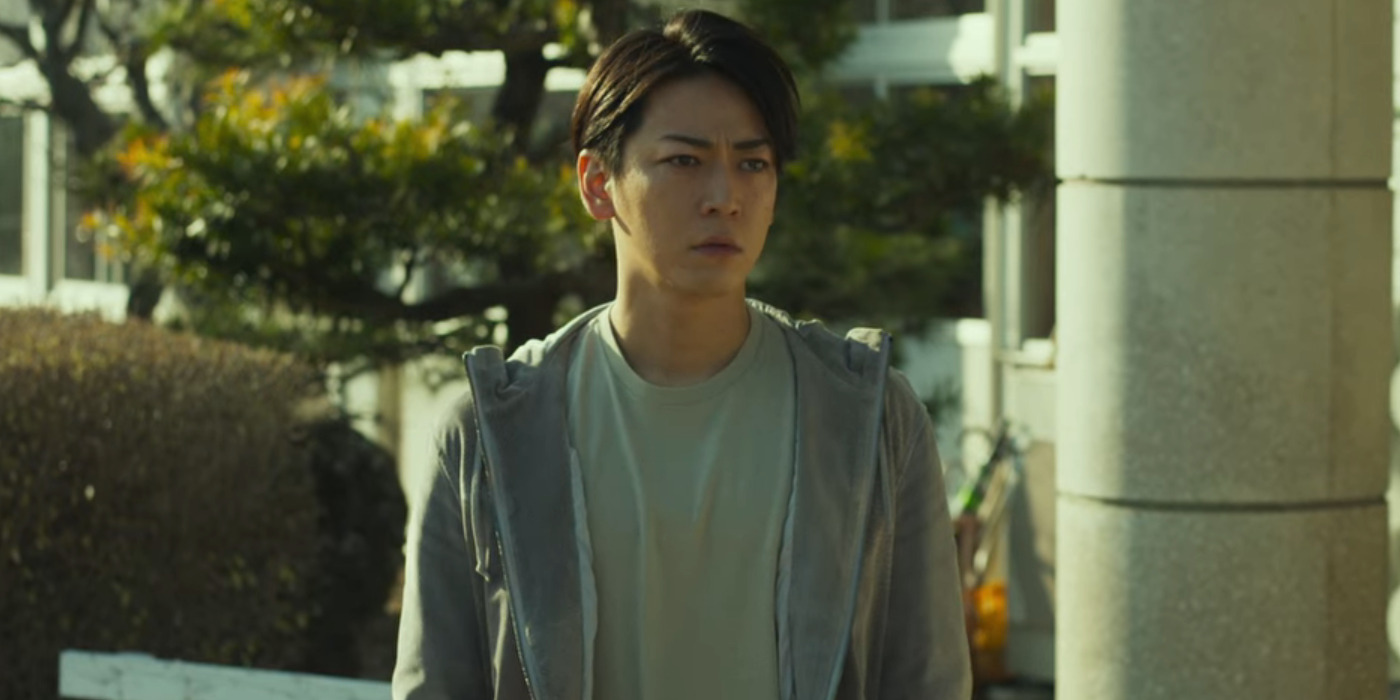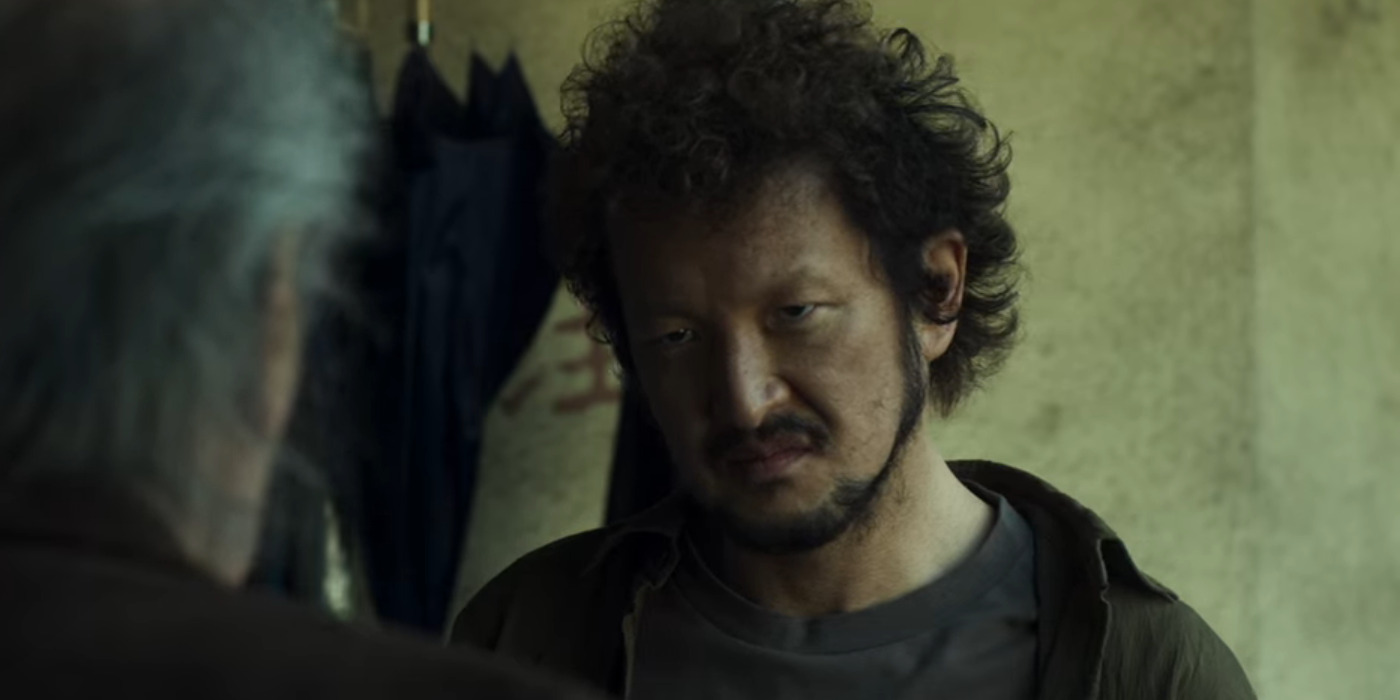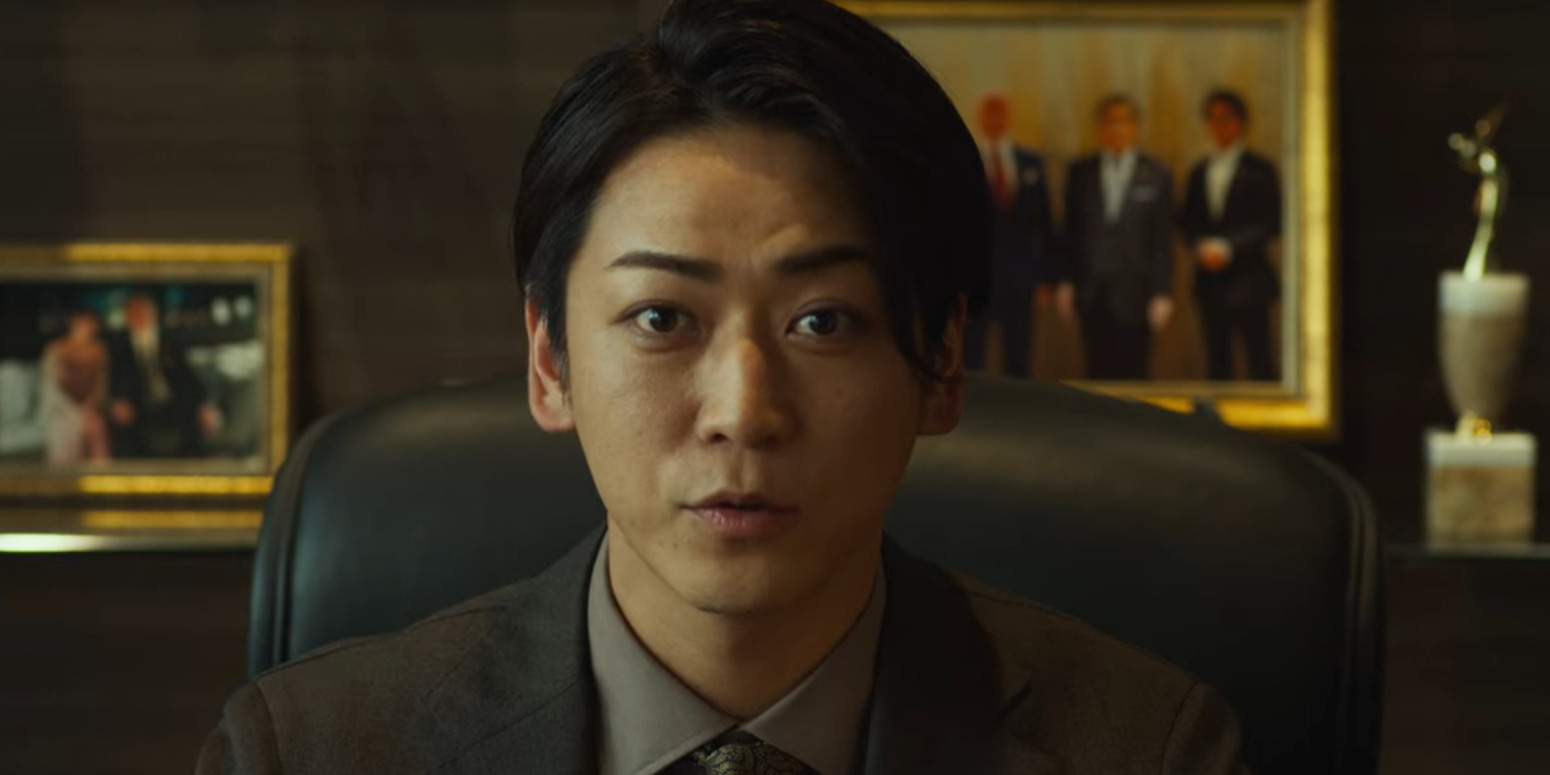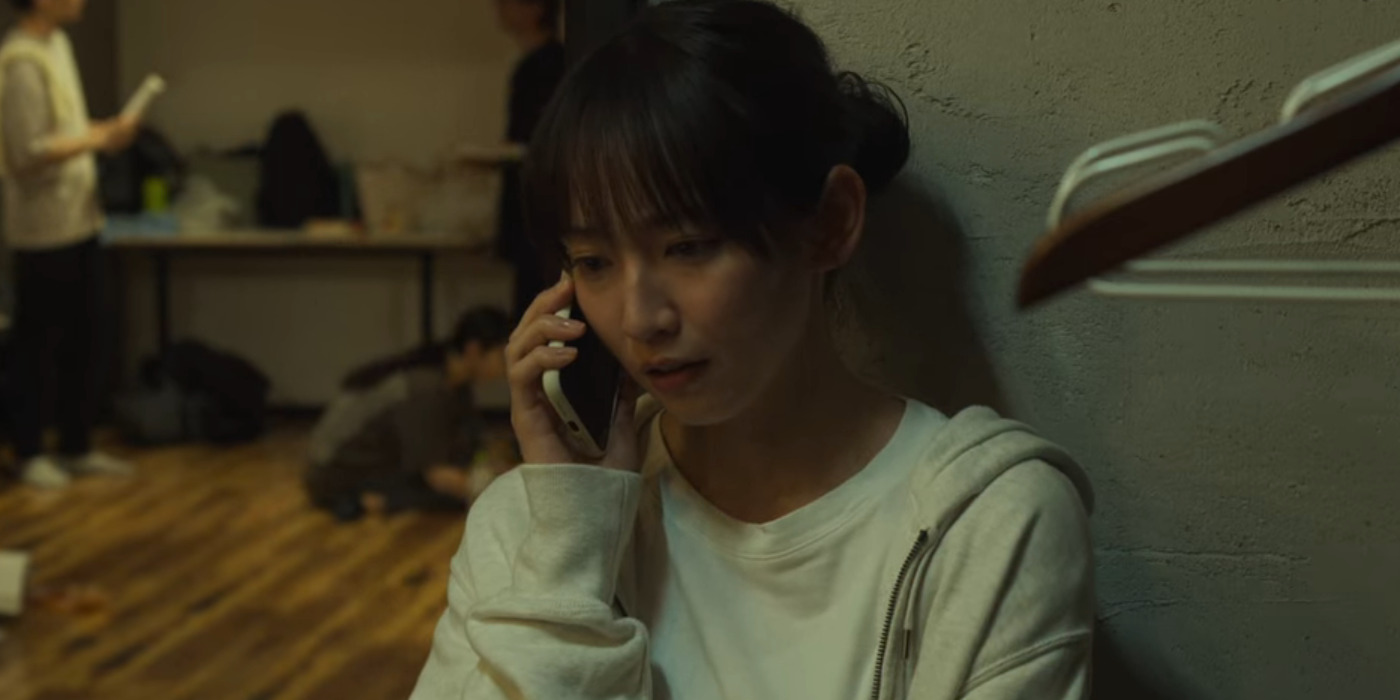‘Lumberjack The Monster’ is a Japanese crime horror film that revolves around the stand-off between a psychopathic lawyer and a serial killer on his tail. As a string of bodies slayed by a killer with the same MO plagues the news channels, Akira Ninomiya, a ruthless lawyer with a dark past, finds himself becoming an attempted victim of the same suspected serial killer. Nevertheless, the man manages to evade the killer’s attack, setting up a rivalry between the two. Meanwhile, the authorities investigate the killer’s case, delving into several puzzling crimes of the past and the present.
The film, equipping psychopathic characters at its narrative center, remains ripe with several mysterious plot threads that come together in the climax for an explosive end. Therefore, with an unconventional protagonist at its narrative center, the story naturally invites the viewers to wonder about Akira’s ultimate fate. SPOILERS AHEAD!
The Lumberjack Monster Plot Synopsis
Around three decades ago, the police discovered a couple— Kazuo and Midori Toma— with numerous dead abducted children in their mansion. The couple were performing inhume experiments on the kids, leaving one sole survivor from the incident. The woman, Midori, who helmed these experiments, gleefully killed herself upon discovery, leaving no question answered. Years later, the town moves on as the horrific crime becomes a memory of the past. Now, a new atrocity slowly builds to torment the city as two the discovery of two dead bodies suggests the rise of a new serial killer.

After a few initial kills, the masked killer sets his sights on his next target, Akira Ninomiya. Akira is a corrupt lawyer who often kills people in subtle, untraceable ways when they stand in his way without any remorse. Consequently, as the killer attacks him at a parking lot, they call the lawyer a monster, asserting that he deserves to die. Yet, Akira refuses to go out without a fight and manages to survive, driving the killer away. Afterward, the man wakes in a hospital, where he learns that his brain has some sort of neuro chip inside it. Since the killer alluded to Akira’s less-than-stellar past, the man decides against going to the authorities, framing his injuries as a mugging gone wrong.
As for the chip, Akira decides to try figuring out its origins with Sugitani, his doctor-friend who is also a psychopath. However, upon inspection, the duo realizes that Akira’s psychopathy is much different than Sugitani’s. While the latter was born as a psychopath, Akira was actually made into one after the chip was implanted in his brain’s empathy center— a procedure that likely took place before he was dropped off at an orphanage as a kid. In the same breath, Akira also realizes his attacker was dressed as the Lumberjack Monster from a kid’s picture book about to be adapted into a feature film.
Meanwhile, as the masked killer’s victims increase in numbers, Ranko Toshiro, a highly qualified police profiler, attempts to help the local police catch the criminal. The ongoing investigation reveals that the killer is targeting people with unpleasant backgrounds who have hurt others in some way. Furthermore, all victims seem to have grown up in different orphanages. Consequently, as Toshiro examines the case further, Akira’s mugging incident comes up on her radar. The profiler— acting on her instincts, decides to meet with Akira and leaves the interaction highly suspicious of the man.
Simultaneously, Akira and Sugitani continue their own investigation to learn how the killer knew of the former’s psychopathic past. Although they reach no new leads, they realize that The Lumberjack Killer’s attack damaged Akira’s neurochip, allowing him to feel empathy again, which hinders his ability to kill. Even though Akira maintains that he would like to fix up his chip and return to his apathetic self, his friend doubts the other’s conviction. On the other side of town, Toshiro sleuths around and illegally accesses Akira’s medical record to learn about the neurochip.
As a result, the police connect the dots to the Toma case, where the authorities discovered Midori to have experimented on kids with neurochip implants. Upon digging, they realize that the killer’s previous victims had similar chips inside their brains. Thus, the incident’s sole known survivor becomes a potential target for the killer. However, as it turns out, the survivor, Takeshi, has complicated ties to one of the leading cops on the case, Inui. A while back, Inui worked on a case where a man killed his wife for insurance money and managed to get away without a conviction. The perpetrator in the case was the survivor, Takeshi Kenmochii, who still has the empathy-dampening neuro chip inside his brain.
Eventually, things come to a head after Akira receives a message alerting him about his fiancée, Emi’s abduction at the Lumberjack’s hands. Even though Akira initially started a relationship with the woman only to get to her father and inherit his law firm, his recent life changes led him to develop feelings for Emi. As a result, Akira rushes to the Toma Mansion for a final confrontation against the Lumberjack Killer.
Lumberjack The Monster Ending: Who Is The Lumberjack? Why Are They Killing Psychopaths?
Throughout the film, a few characters, including Sugitani and Inui, are suspected of being the Lumberjack killers. Inui becomes a suspect after Takeshi goes missing from police custody, on the heels of Inui’s dismissal from the case. Consequently, Toshiro naturally grows suspicious of the man. Nonetheless, he turns out not to be the killer as the cops find him in his apartment. Yet, through the misunderstanding, Toshiro figures out the real identity of the killer after Inui confirms that he saw fresh flowers on Takeshi’s wife’s grave. Thus, the reveal arrives that Takeshi is the man behind the Lumberjack Monster mask.

Akira learns the same in the basement of the Toma Mansion, where he finds Emi bound and gagged by the killer. Due to Takeshi’s neuro chip, the man lacked the ability to feel empathy. As a result, after his experience at the Toma Mansion, the man grew up to be selfish and entirely self-serving without any regard for others’ emotions. For the same reason, he had no qualms about killing his wife in a perfect murder that earned him his wife’s life insurance money. However, things changed for Takeshi after a confrontation with Inui. The cop was already infuriated by Takeshi since the man was easily getting away with his wife’s murder. Therefore, after Inui found him assaulting his father-in-law, Inui attacked Takeshi.
The instance dislodged Takeshi’s neurochip, robbing him of his apathetic disposition. Consequently, the man began feeling remorse about his past actions, especially his wife’s murder. Furthermore, he realized the actual harm that the chip inflicts upon its hosts. Therefore, he tracked down data records for other Toma case survivors like him who were fixed with psychopathy-inducing chips. At first, the man only wanted to help out these people through surgery. Nonetheless, as he began looking into others like him, he realized that all of them had partaken in various immoral activities. Much like Takeshi, these people also lacked basic empathy, which compelled them to cheat, rob, lie, and hurt others around them for their own gain.
Takeshi sees a reflection of his own actions in these individuals and decides against his initial Samaritan plan. In a way, the same conveys Takeshi’s inability to forgive himself for his actions, holding on to a deep sense of guilt. Since the man can’t give himself a second chance, he decides others like him don’t deserve the same and embarks on a rampage to kill each person in meticulously planned attacks. Consequently, with every psychopath he kills increasing his own body count, Takeshi is projecting his own sins over others. Although he’s trying to elevate himself over his fellow psychopaths by claiming morality for killing them, he’s really only condemning himself further to hell. In the end, the real person Takeshi seeks to kill has always been himself all along.
Akira pushes Takeshi to confront the same ideas in their Toma Mansion altercation, as the latter attempts to kill the lawyer. In the process, Takeshi also reveals Akira’s secret to Emi about how the man has been lying to her the entire time after killing her father to secure full ownership over her inheritance. Nonetheless, Akira refuses to allow the other man to ruin his future. While Takeshi’s broken chip swarmed the man with guilt and self-hatred, Akira instead found a new outlook on life. Therefore, he wishes to experience all of the emotions the chip withheld from him.
In the face of the same, Takeshi realizes that there isn’t any other future for him save for an unhappy one. As it would turn out, the man’s belief that he can’t save other victims like him stems from an early childhood experience. As kids, Takeshi and Akira grew up alongside one another at the Toma Mansion. Takeshi was the first one to undergo the chip implant treatment and attempted to save Akira from going under the knife. Nevertheless, he failed— an instance that set the tone for his future.
Thus, in the end, once Akira recognizes his old friend, he decides to allow him the desperate escape he needs through death. Still, his newfound empathy stops him from delivering the death blow. Instead, he shares a cigarette with Takeshi, which the latter uses to set fire to the basement— burning himself down in the process.
Does Akira Repair His Neuro Chip? Can He Feel Empathy?
Initially, after Akira learns that his psychopathic tendencies are a result of the neurochip inside his brain, which has since broken, the man immediately wants to find a way to fix the chip and return to his old self. Since Akira has been experiencing the world through the chip’s filter, he has no other way to perceive his surroundings. As such, he’s overwhelmed and disturbed when he first experiences empathy, which prevents him from killing people. Throughout his life, Akira has depended on his ability to commit untraceable murders to get ahead. His life is entirely centered around his inability to empathize with people— from his similarly psychopathic best friend to his fiancee, whose father Akira murdered. Therefore, the idea of a life vapid of his psychopathy is daunting to the man.

Nevertheless, in the few days that Akira lives without the chip’s influence, he begins to understand the significance of his previously blocked emotions. Furthermore, unlike Takeshi, who is forced to confront his wife’s murder after the chip’s destruction, Akira has Emi by his side. Therefore, through her love and affection, Akira begins to understand his past folly and anticipate a brighter future. For the same reason, he believes he owes it to Emi not to fix the chip and return to his old ways. As such, even though he takes Takeshi’s data bank, which would help him find a way to fix the chip, he ultimately decides against it. Instead, the man decides to nurse his relationship with Emi and undertake a different route in life.
Why Does Akira Try To Kill Emi? Does He Die?
Since Akira’s redemption from his past violent psychopathic tendencies stems from his growing affection for Emi, his final interaction with the woman might throw the viewers in for a loop. After Takeshi’s death, Toshiro attempts to confront Akira and establish that she plans on busting him in the future. Nevertheless, the lawyer doesn’t pay her much attention, more interested in ensuring Emi’s safe recovery from her traumatic experience at the Toma Mansion. During his altercation with Takeshi, Akira used Emi as a hostage to fake his continued psychopathy and catch the other man off-guard.

Although Akira never planned to kill Emi, the woman wasn’t aware of the same. From her point of view, she just learns that the man she was about to marry had faked her father’s suicide to secure her wealth under his own name. For the same reason, she’s scared of Akira when the man visits her in the hospital. Even so, Akira fails to read the room and assumes he’d be able to return to Emi’s good graces despite his recent atrocities. Nevertheless, Emi makes her disagreement with Akira’s plan clear as the woman stabs him in the torso after he pulls her into a hug.
Emi hasn’t and never can forgive Akira for using her as a pawn in his game. Furthermore, now that she has knowledge of her father’s death at the lawyer’s hand, she’s filled with a desperate need for revenge. Consequently, Emi stabs Akira, ending their story in the only way she can stomach. However, before dying, Akira does the unexpected and moves to choke Emi as he’s bleeding to his death. Yet, once his hands have formed bruising imprints around her neck, Akira lets Emi go.
In the end, Akira chokes Emi to ensure that she can use the marks on her body as evidence that she killed Akira in self-defense. Akira knows that his death will attract attention— most of all from Toshiro. Therefore, before dying, Akira makes sure to provide Emi with a way to escape conviction for his murder. Ultimately, Akira’s dying actions remain an antithesis to his life as he attempts to protect Emi from a cruel fate.
Read More: Is Lumberjack Based on a Real Japanese Serial Killer?


You must be logged in to post a comment.